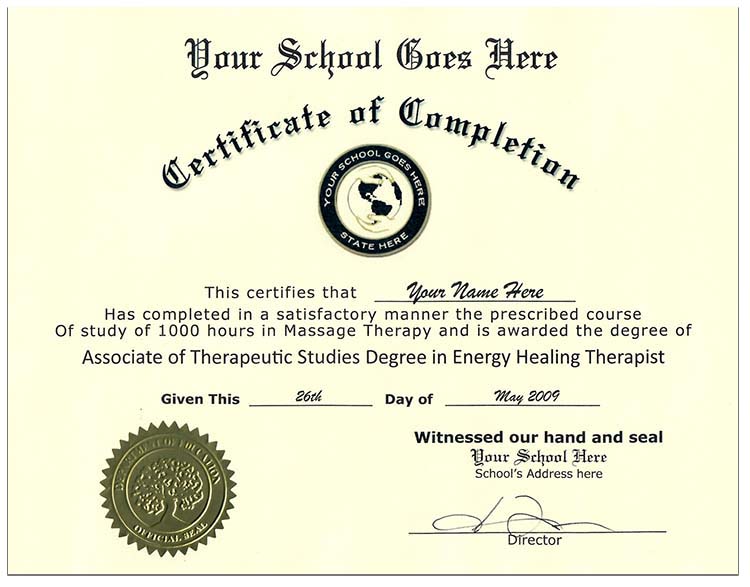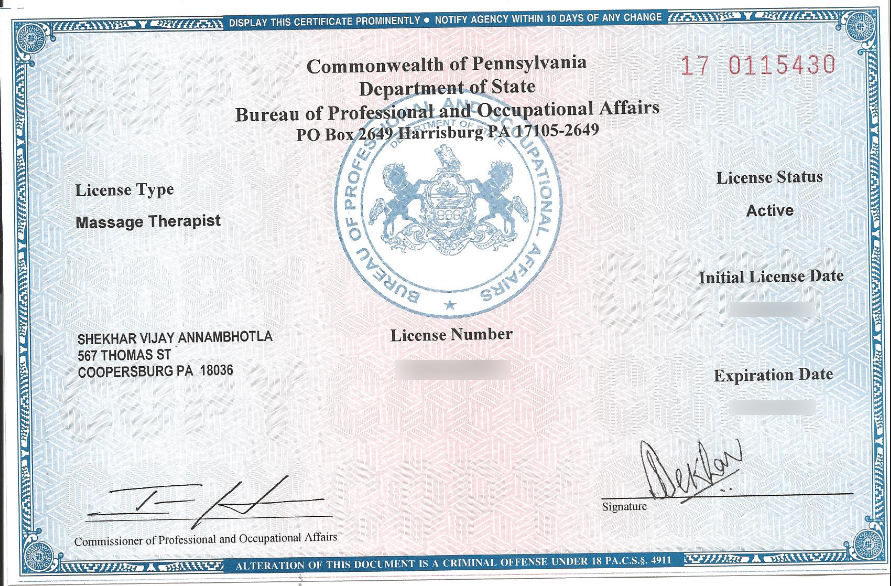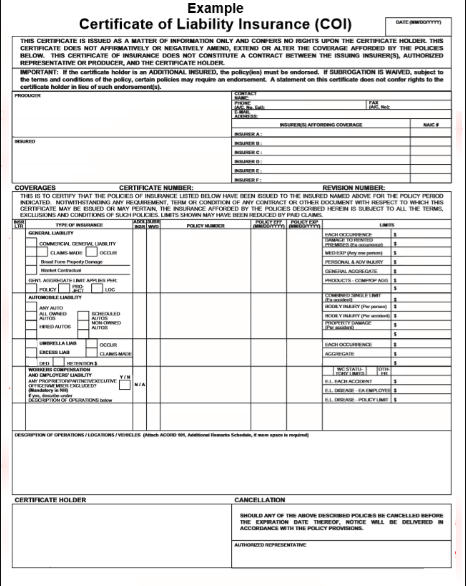It’s well known that a person can have their well-being improved by having their soft body tissue manipulated by a massage therapist. Individuals who go to a massage therapist experience a reduction in anxiety, stress as well as increased relaxation in their muscles. A massage therapist is also able to help injured muscle or other areas of a body with rehabilitation.
Many massage therapists dream of starting their own business. They may already have a job but feel the time is right for them to branch out on their own. It’s also possible they’re new to the profession but want to be their own boss. They will allow them the freedom of a flexible work schedule that makes it possible to maximize their profits and more. Here are the steps you need to complete in order to start your very own massage therapy business.
Step 1 – Massage Therapy Certification

source: diplomasandmore.com
Prior to having any type of massage therapy business, an individual must complete their massage therapy certification. It is important to learn about certification from the National Certification Board for Therapeutic Massage and Bodywork (NCBTMB). There are several different types of massage therapy an individual can focus on for their business. It could be a sports massage, remedial massage and more. There are also essential techniques that would require additional certification training. Certification will require someone to have a specified number of practicum hours working in a clinic as well as performing hands-on therapy.
Step 2 – Business License

source: ojas.us
When starting a massage therapy business, it will require obtaining a business license. A person can learn about the business license requirements from local and state laws. If a person sells massage therapy products, as well as provide massage therapy services, they may need a specific type of business license. A person should contact their State Department of Revenue and Consumer Affairs to see if they need an Art of Healing license. It’s also possible to learn about licensing requirements from local business associations. They can typically provide members with the necessary licensing requirements for the particular state where their business will be located.
You may also Like to know about About Massage Chair Therapy and Massage Recliner Chair
Step 3 – Join Massage Therapy Organization

source: evolvecollege.com
An excellent way for a person with a massage therapy business to stay current with any changes in the industry, as well as an excellent way to network, is by joining a massage therapy association. They provide business advice, important information and more. There are a number of massage therapy organizations who do not charge any membership fees. The National Certification Board for Therapeutic Massage and Bodywork (NCBTMB) maintains a listing of massage therapy organizations located in the United States.
Step 4 – Liability Insurance

source: fitsmallbusiness.com
When someone owns their own massage therapy business, they are responsible for having coverage for any injury liabilities involving clients. A massage therapist must be able to protect themselves should they be sued by a disgruntled client. It’s possible a damage claim can occur as well as other types of legal issues. This insurance protection makes it possible for a person and their business to survive a lawsuit. It may also be important to have other types of insurance like health insurance, disability coverage and more. You can research the different types of massage liability insurance at massageliabilityinsurancegroup.com.
It is a mistake for any person with a massage therapy business to skip purchasing the necessary liability insurance and more. When it is done right, a massage therapy business will have a steady flow of customers seeking services. Unfortunately, this also increases liability issues. The price for liability and other types of insurance will be determined by the location and size of the business. In many cases, it can be provided at a reasonable cost and is well worth the investment.




